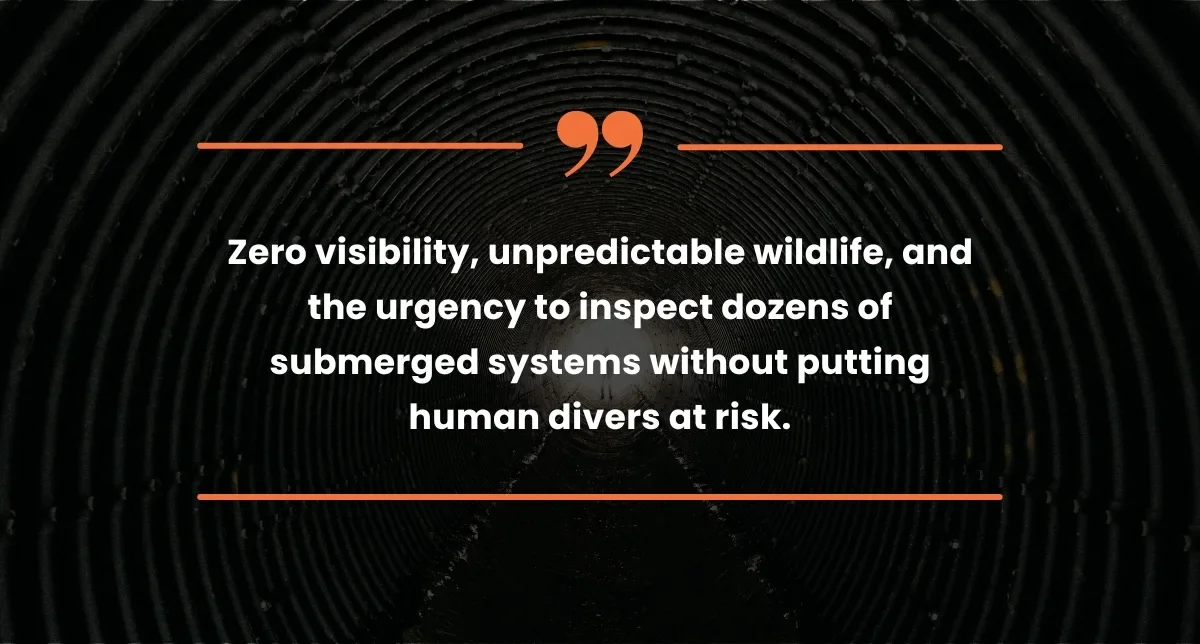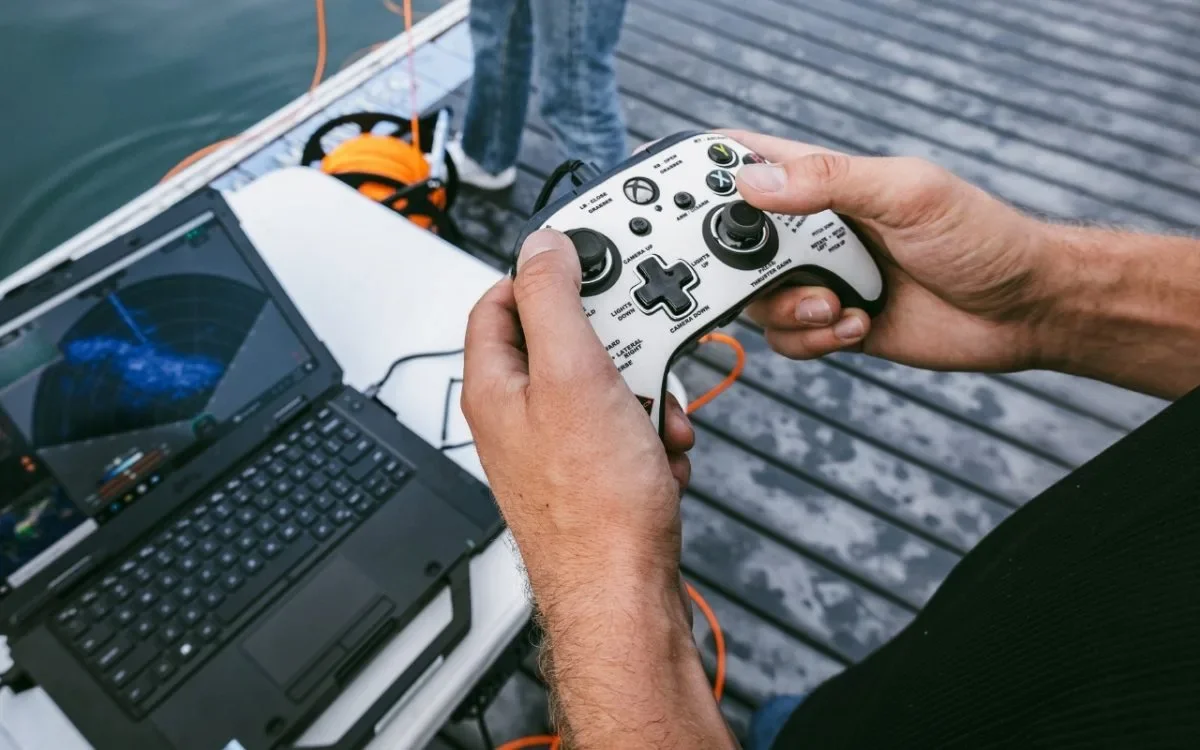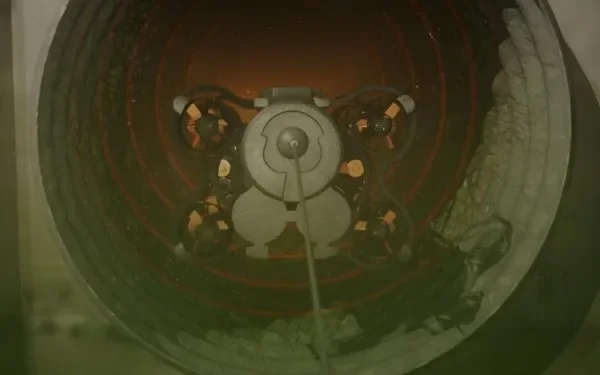How Inspection Crews Are Using ROVs to Prepare for the Next Disaster
Pre and Post Storm Inspections
In the event of another hurricane, civil engineering teams are prioritizing pre-storm inspections of critical infrastructure—such as pipelines, canals, and roadways—to ensure these systems can withstand flooding. Traditionally, advanced divers carried out underwater investigations—collecting data, documenting conditions, and recommending repairs or improvements.
click on the picture for lager size
Today, instead of sending divers into dangerous, zero-visibility, alligator-prone floodwaters, inspection crews deploy ROVs first. These systems capture high-resolution sonar and video data safely from the surface, delivering the same critical insights without putting lives at risk. This approach not only keeps teams out of harm’s way but also delivers faster, more accurate assessments of hard-to-reach areas.
These advanced underwater ROVs are quickly becoming the go-to solution for evaluating storm-damaged structures. Equipped with intuitive software, high-resolution cameras, 2D imaging sonar, and pipe-profiling sonar, these ROVs can detect cracks, erosion, blockages, and other structural weaknesses in submerged culverts, storm drains, and canals.
Oceanbotics ROV Featured on Smithsonian Channel’s How Did They Fix That?
The SRV-8 ROV was recently featured on the Smithsonian Channel’s hit series How Did They Fix That? (Season 4, Episode 3 – “Water Work”), highlighting how modern ROV technology is reshaping emergency management and hurricane preparedness.
In the episode, a Florida-native underwater engineering firm, UESI, demonstrated how they easily deploy the SRV-8 ROV to perform post-hurricane pipeline inspections. Host Mike Davidson observed as the ROV navigated through flooded roadside canals near Fort Pierce, Florida, an area heavily impacted by Hurricane Milton.
As ROV operator Max Jackson explained during the deployment:
“You’re able to go around in the water with zero visibility and have a perfect picture of what you’re picking up through the sonar. And when you have eight thrusters on the ROV, you’re able to maneuver around certain places a human diver wouldn’t be able to do.”
click on the picture for lager size
Using Oceanbotics’ SubNav OS software and handheld controller, the ROV operator easily piloted the SRV-8 to scan a series of 50-foot storm culverts. The live sonar image revealed whether pipe joints were sealed and structurally sound, or showed damage from high water pressure during the storm.
With the pipe-profiling attachment, the team could:
“Go through a pipe and actually get a 3D picture of what you’re dealing with inside the circumference,” says Jackson.
What Is Pipe Profiling?
The SRV-8 with pipe-profiling sonar can scan the pipe’s interior and display a precise 3D cross-sectional image.
This allows crews to measure sediment buildup, identify cracks or blockages, and verify the pipe’s structural integrity
Pipe profiling is a specialized sonar technique used by inspection ROVs to scan the inside of submerged pipes, culverts, and drains. By sending out a rotating imaging sonar beam, the ROV generates a precise cross-sectional image of the pipe’s interior. This allows crews to measure sediment buildup, identify cracks or blockages, and verify the pipe’s structural integrity, all without draining water or using expensive equiptment.
With pipe-profiling sonar, inspection teams can quickly determine whether a pipeline is clear, partially blocked, or at risk of failure, critical information for stormwater management and hurricane preparedness.
Why ROVs Are Critical for Hurricane Preparedness
“Why are underwater inspections the perfect job for an ROV?” host Mike Davidson asked during the show.
“Zero visibility, unpredictable wildlife, and the urgency to inspect dozens of submerged systems without putting human divers at risk first,” says Jackson.
ROVs deliver easy control and precision maneuverability, allowing access to tight and hazardous environments no human could safely reach. Operated with a simple handheld controller and laptop interface, they require minimal training while still providing advanced capabilities. Real-time imaging sonar data enables teams to make rapid decisions that directly impact public safety and disaster recovery.
The Future of Hurricane Disaster Response
As hurricanes intensify and climate-related disasters become more frequent, the demand for efficient, easy-to-use inspection tools is greater than ever. ROVs like the Oceanbotics SRV-8 and SRV-8X offer crews a reliable, cost-effective way to assess underwater infrastructure quickly and safely—before small problems escalate into major failures.
From storm drain inspections to flooded canal surveys, inspection ROVs are proving to be indispensable for emergency management, law enforcement, search and rescue, and infrastructure protection.
Source: https://oceanbotics.com/how-inspection-crews-are-using-rovs-to-prepare-for-the-next-disaster/







